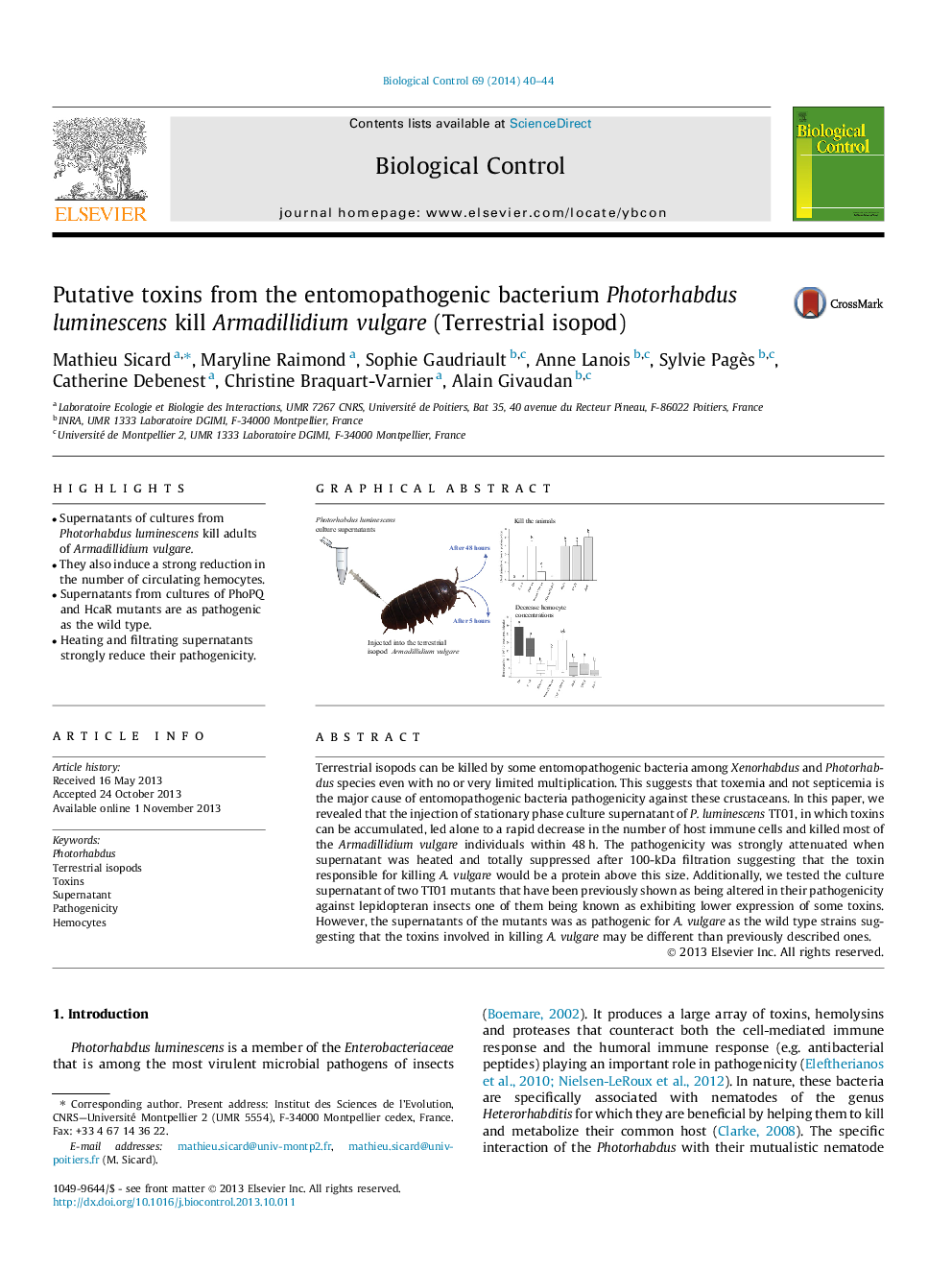| Article ID | Journal | Published Year | Pages | File Type |
|---|---|---|---|---|
| 4503978 | Biological Control | 2014 | 5 Pages |
•Supernatants of cultures from Photorhabdus luminescens kill adults of Armadillidium vulgare.•They also induce a strong reduction in the number of circulating hemocytes.•Supernatants from cultures of PhoPQ and HcaR mutants are as pathogenic as the wild type.•Heating and filtrating supernatants strongly reduce their pathogenicity.
Terrestrial isopods can be killed by some entomopathogenic bacteria among Xenorhabdus and Photorhabdus species even with no or very limited multiplication. This suggests that toxemia and not septicemia is the major cause of entomopathogenic bacteria pathogenicity against these crustaceans. In this paper, we revealed that the injection of stationary phase culture supernatant of P. luminescens TT01, in which toxins can be accumulated, led alone to a rapid decrease in the number of host immune cells and killed most of the Armadillidium vulgare individuals within 48 h. The pathogenicity was strongly attenuated when supernatant was heated and totally suppressed after 100-kDa filtration suggesting that the toxin responsible for killing A. vulgare would be a protein above this size. Additionally, we tested the culture supernatant of two TT01 mutants that have been previously shown as being altered in their pathogenicity against lepidopteran insects one of them being known as exhibiting lower expression of some toxins. However, the supernatants of the mutants was as pathogenic for A. vulgare as the wild type strains suggesting that the toxins involved in killing A. vulgare may be different than previously described ones.
Graphical abstractFigure optionsDownload full-size imageDownload as PowerPoint slide
